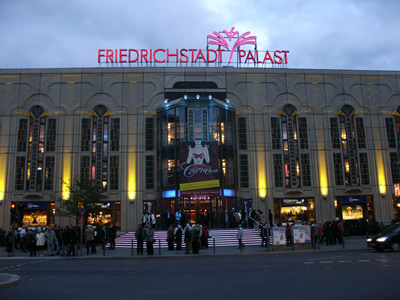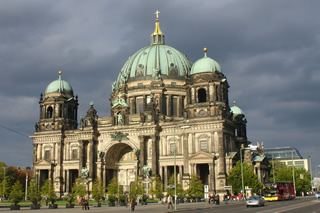The Friedrichstadt-Palast is one of Berlin’s most iconic revue theatres, located in the heart of the Mitte district. Originally opened in 1867, the theatre has undergone numerous transformations and rebuilds over the years, reflecting the evolving tastes and demands of entertainment. The current building, completed in 1984, is a modern marvel and a testament to Berlin’s post-war cultural revival. Read the rest of this entry »
Posts Tagged ‘Berlin’
The Berliner Dom
The Berliner Dom or Berlin Cathedral as we know it, dates back to 1451 although it has been rebuilt several times, with the current building dating back to 1905 which in fact it was severely damaged by World War II and only finally fully restored in 1993 although in smaller and far less grand. The Cathedral is located in Colln and part of the central Mitte Island which houses many of Berlin’s most historic buildings and museums. Today the cathedral’s magnificent dome stands 115 metres and the building is 114 metres long. It is built from Silesian Sandstone. Many visitors come to the Dom to see the beautiful mosaics and the Sauer’s Organ. For those wanting to see the view from the top of the dome there is a 270 step climb which is well worth the effort for the amazing sight.
Berlin Week along the Unter den Linden
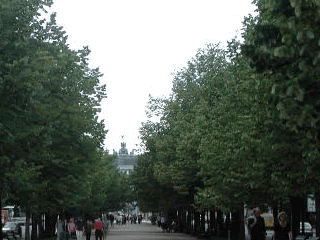
Unter den Linden is one of Berlin’s premier and grandest streets. Travelling through the city east to west the street is home to some of Berlin’s most impressive buildings and monuments including the German Historic Museum and Humboldt University and the Staatsoper. The street is lined with linden trees which give the street its name, they date back to the mid 1600’s although have all been replanted several times including after the Second World War when the street was severely damaged. The Unter den Linden stretches from the Brandenburg Gate to the Palace of the Republic and makes a fantastic walking tour when visiting the German capital, there are several great coffee shops or Kaffeehaus along the way where you can kick back and enjoy the beautiful scenery while sipping a Latte Macchiato- a Berlin specialty.
Berlin week – Berleskanzleramt
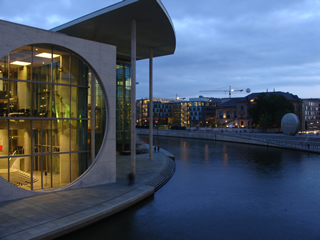
One of the things you notice most about Berlin is the huge and striking new architecture which has been created since the fall of the Berlin Wall. One of the most striking is the Bundeskanzleramt or Chancellery which opened in 2001 as part of the government’s move from Bonn to Berlin. This huge exposed concreted masterpiece of modern architecture is opposite the Reichstag and the Brandenburg Gate and is just as imposing. Taking four years to construct and nearly quarter of a million Euro to build it was designed by German architects Alex Shultes and Charlotte Frank. The 300 plus office building is home to the German cabinet and office of the German Chancellor who has his office on the seventh floor of the building while living on the top floor. Due to security issues the Bundeskanzleramt is not open to the public but the just to view the impressive architecture outside is well worth the visit to see it.
Berlin Week – Berliner Dom
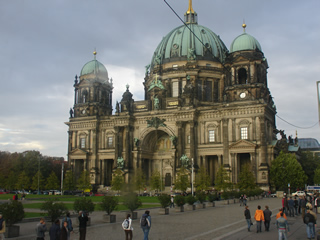
The beautiful Baroque Berliner Dom or Berlin Cathedral was built on Museum Island on the river Spree between 1894 and 1905 but the site has been a church for over 600 years and has been home to many churches since. The Berliner Dom was constructed under Emperor Willem II’s reign and designed by Julius Raschdorff who had the task to design something as impressive as St Peter’s Basilica in Rome. The Second World War saw much damage to Berlin and the Dom was no exception, it suffered serious damage after a fire bomb hit the structure and destroyed much of the building including the dome roof. 1975 saw the start of the painstaking restoration project which saw the church reopen in 1993. The interior is not as elaborative as it was before the war but it is still simply stunning. The church has a magnificent organ and some amazing stained glass windows and also has an alter from the previous cathedral which was raised to build this new one.
Berlin Week – Hus der Kulturen der Welt
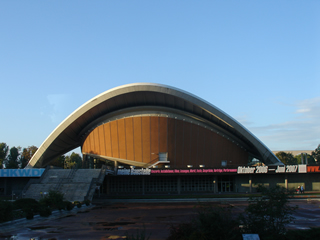
The Hus der Kultren de Welt or House of World Cultures is another one of Berlin’s amazing architectural statements. This interesting oyster shaped building was built in 1957 as the USA’s contribution to a huge building exhibition called Interbau. This exhibition not only showed some cutting edge architecture but helped Berlin rebuild after the damage it received during World War II. Today the building designed by Hugh Stubbins is used for temporary exhibitions of culture and world art in particular no European cultures, including fine arts, theatre, literature, film and other medias. The grounds of the Haus der Kulteren de Welt also features some amazing sculptures and offer some spectacular photographic opportunities against the building and Berlin sky.
You would be a sausage to miss the Deutsches Currywurst Museum
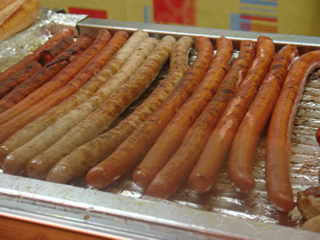
No one does the sausage better than the Germans and to celebrate their skill in making these tasty cylindrical morsels the Deutsches Currywurst Museum has been set up in the Deutsch capital Berlin. Berlin is proud of the sausage and claims to be the place where the Germany’s favourite sausage the Currywurst was invented. The brand new museum traces the history and legend of the sausage, its effects on culture, the ingredients (those that are mentionable) and offers all the smells and sights you would expect to experience in a sausage museum, and like any good museum they have a gift shop at the end of the museum where you can pick up some sausage treats and plenty of novelty items. The Currywurst museum is a fun and interactive look at the sausage and has some pretty fun displays including huge sauce drops and giant sausage and fries props, it is fun for young and old. The cinema is sure to be one of the museums highlights showing some great moments in sausage history with adverts, and a funny documentary called “Best of the Wurst”. The museum is self paced but does offer interactive tours which take about 45 minutes, currently they are only held in German but there are plans for English tours in the new year. Located on Schutzenstrabe the museum is very handy for the Berlin visitor being only 100 metres away from Checkpoint Charlie. Read the rest of this entry »
Berlin’s Victory Column
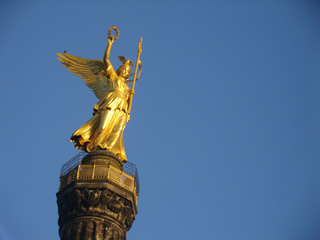
One of the most recognisable images of Berlin is the Victory Column or Siegessaule standing in a roundabout at the Tiergarten. Standing at nearly 67 metres the huge column is topped with a magnificent golden bronze statue of Victoria which alone weighs over 35 tonnes and is 8.3 metres high. The monument was designed by Heinrich Strack to commemorate the Prussian victory in 1864. the monument has been shifted a few times with the last being in 1939 as part of Hitler’s failed Welthauptstadt Germania plans. The column has been used in many movies and video clips including U2’s Stay single and is a focal point of the Berlin Love Parade. Even Barack Obama used the column as a backdrop to his historic visit during the 2008 Election campaign.
Berlin’s Stadtschloss / Palast der Republic
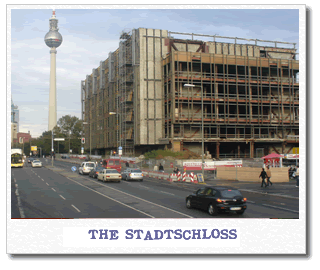
The Stadtschloss was once a German palace for William 2 prior to WW1 it was largely destroyed during WW2 and eventually demolished during the 1950’s by the East German Government to remove traces of the former Empire. In its place the Palast der Republic was built as East Germans Parliament. Opened in 1976 it was a modern building that contained galleries, restaurants, a disco and a bowling ally. The Palast was built as a symbol of East Germany’s strength and pride and many former East Germans have fond memories of their time there. Today the Palast is slowly being demolished with work expected to finish in 2008. Much of the Palast’s interior was removed in the late 1990’s after asbestos was found in the building. The empty shell was then used as an art space for a time until it was decided to demolish the building all together. Since work began on demolition there are groups who have been pushing the idea to rebuild the former Royal Palace Stadtschloss while other groups are lamenting the loss of the Palast der Republic claiming the current government is trying to wipe out Berlins socialist past in the same way the East Germans tried to wipe out Germany’s imperial past. Some people are just glad to see the back of an ugly 1970s building and would be happy if the area is replaced with grass. The German Parliament has recently decided to rebuild most of the castle with a modern interior, work will start in 2010 and it will be known as the Humboldtforum.
Read the rest of this entry »
The Third Reich Tour
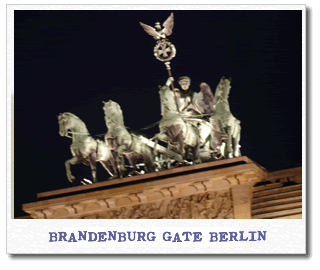
Berlin is so rich in history and one part of history that the Berliners are trying to put behind them was the horrible acts of Hitler and the Third Reich. Now there is a very interesting walking tour which traces the history of this terrible time and gives the visitor an insight of what happened and why things happened in the first half of last century. The tour takes about 3 1/2 hours and takes in some pretty chilling moments in history. You will stand above the sight of Hitler’s bunker where he spent his last weeks of life, You will see the Nazi Air Force Headquarters and the Goebbels Propaganda Ministry which was home to the German Press office and then see the SS and Gestapo headquarters before visiting the only remaining piece of the Berlin wall and finally visiting the Soviet Memorial, which celebrates Russia’s liberation of Germany. The tour runs on Tuesday, Fridays, Saturdays and Sundays from 1PM visit the website for more information.

